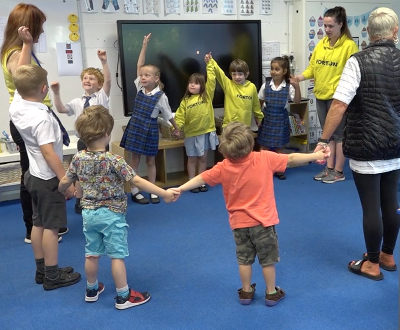The Elements of Music - a basis for teaching children
Music at every level is made up of some, and often all, of what we call the Elements of Music. Music Playtime progressively covers all these elements. Using the specific terms of the elements of music makes it possible for all ages and abilities to talk about music more easily and clearly. OFSTED regards it as essential for teachers, and hence children, to use correct terminology and vocabulary within the context of music making. If you do use these terms in a musical context with children, they will begin to understand them and develop better musical perception. Once you have your subscription to Music Playtime, please log in and download the quick reference Elements of Music cards which you can print out and laminate - you'll find them at the start of the Ourselves and our Friends units for both Early Years and Key Stage 1.
Listen to the way in which one of the children spontaneously comments, in the video below, on the pitch of a song. The comment is followed up by a timely exploration of the physical properties of pitch when played on a xylophone - any teacher can do this without the need for expert knowledge.
These are the Elements of Music
- Tempo - fast or slow speed of the regular musical PULSE, which is like a heartbeat. Pulse and beat mean the same and are, alternatively, categorised by some people as an aspect of Duration.
- Duration - long and short sounds or a mixture of note lengths that make the RHYTHM. You can often guess a song if someone claps the rhythm.
- Pitch - high and low pitched sounds. The specific pitch of notes such as A, B, C, D, E, F, G (pitch is never to do with volume).
- Dynamics - loud and quiet sounds, including moving gradually from one to the other.
- Texture - combined sounds or single sounds. A single melody eg just one flute has thin texture. The texture is thicker when different lines of music sound together eg flute and piano.
- Timbre - the individual sound quality that enables us to tell a trumpet from a violin, rain from wind, mum's voice from teacher's voice.
- Structure - the way music is constructed. For example, a song can be four, simple lines or more complex like a verse and chorus.
- Silence - the quiet spaces between musical sounds, silence before music starts or after it ends.
